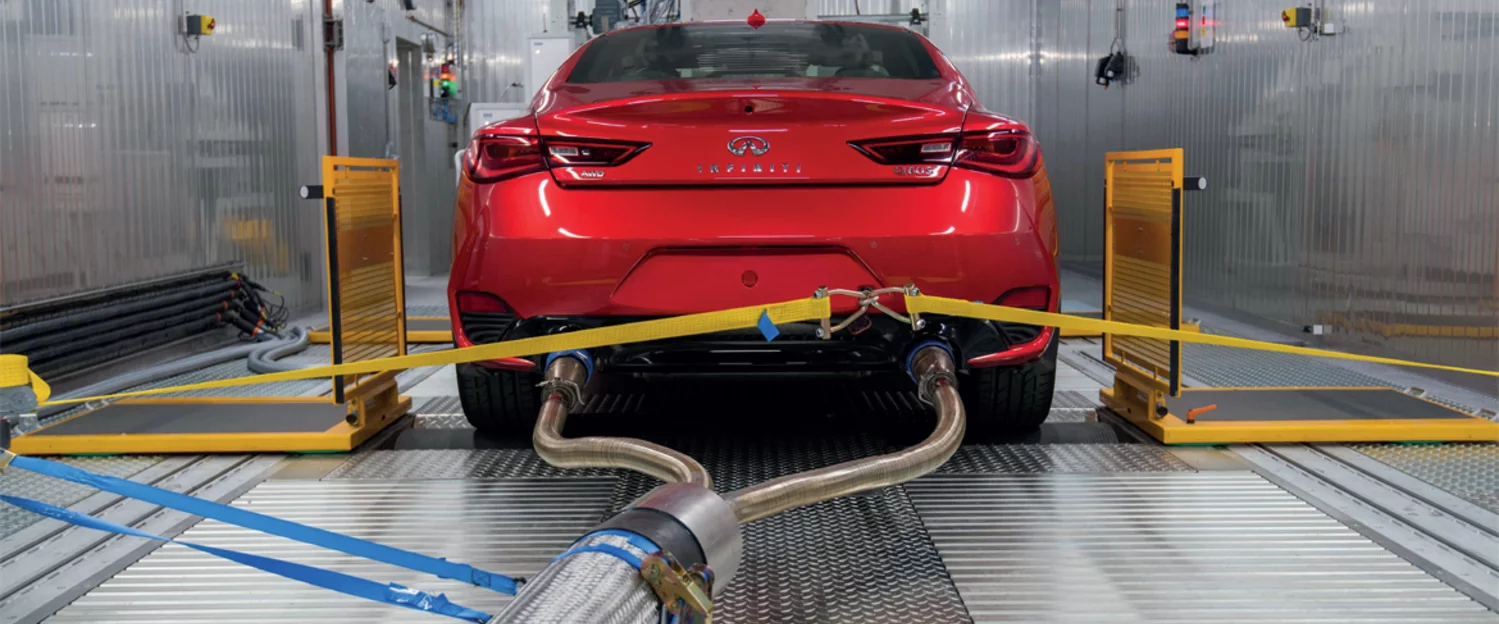With legislation changing about as fast as a Mercedes Formula 1 off the starting grid, MAHLE Powertrain set about investing in one of the most sophisticated vehicle simulation facilities in Europe. Following the award of a £2.1 million investment by SEMLEP Local Growth Fund, the £8.3 million project is now fully operational. This new, cutting-edge facility enables hybrid simulation and emissions assessment earlier in the development programme. It significantly reduces the timescales of typical powertrain development projects.
Axel Brix, Senior Sales Engineer at Weiss Technik, explains how Weiss integrated with MAHLE’s RDE development team to deliver an altitude and environmental test chamber solution that is setting a new technological benchmark for the automotive industry. “We are delighted to have had a long association with MAHLE, delivering a number of significant projects around the globe. Over recent years, MAHLE has developed a sophisticated vehicle simulation solution that utilises several innovative technologies to provide powertrain engineers with RDE-ready engines in much shorter timeframes. The importance of altitude and environmental simulation testing for specific components is growing at a pace. MAHLE’s vehicle element of the simulation covers base model, hybrid simulation, gearbox simulation, vehicle variant and engine after treatment. The driver axis covers defensive, normal and aggressive modes, while numerous digitised RDE routes can be used to simulate varying traffic conditions, topographies and road layouts. When we are designing a project like this, it’s important to remember that the testing facilities typically represent around 25% of the total project value. It’s therefore critical that the test installation delivers consistent performance and reliability. Furthermore, we are always looking at methods to reduce energy consumption and the associated life-cycle costs, without incurring additional investment. This calculation is particularly important in the first 10 years of operation.
Our customers are also looking for a degree of flexibility in the way we work with them. For example, we can either interface directly with the clients’ technical team or work as part of a total turnkey operation to deliver a truly bespoke solution. Either way, it’s the high degree of expertise that Weiss technical specialists bring to the project that our customers appreciate. With performance data now a critical part of the equation, we can confidently claim that only Weiss has an in-house team of technical specialists that have developed our unique “S!MPATI” software. This is our latest control system that enables optimum operation of environmental simulation tests and remote monitoring from a PC. Of course, another big plus is that we have the largest team of factory-trained technical service engineers in the UK. When a problem occurs, our customers expect us to react quickly. This is an area in which we are constantly investing and during 2019 we will see our front-line service team significantly increase its capacity.”
Simon Williams, leader of RDE Development at MAHLE Powertrain, believes that simulation is the way forward for RDE capable powertrains; “Given the competing demands of RDE and WLTP, MAHLE believes that the well-established testing procedure for powertrains requires a significant shift in focus. While road-based RDE testing has become a staple of emissions testing in recent years, MAHLE Powertrain’s team based at Northampton believes that the added time and cost of attempting to capture rigorous, consistent data using on-road testing is no longer viable. Whilst the proven test stages of simulation, steady state and transient engine test bench, chassis dyno and RDE on road are well understood, we think this is an inefficient model to develop tomorrow’s powertrains. Given the huge complexity of the new testing regimes, juxtaposed with the commercial realities of vehicle manufacturing, a return to the laboratory is inevitable. It is now necessary to consider the implications of RDE throughout every stage of the development process.”
Key performance attributes
- Temperature operating range -40°C to +60°C
- Altitude up to 5000m
- Humidity Control 10 to 80 % r.h.
For further details, please contact us.


